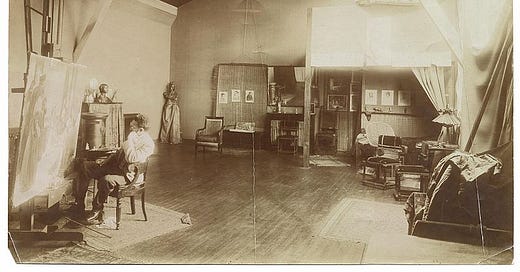Henry Ossawa Tanner: Part IV
"It is not by accident that I have chosen to be a religious painter. I paint the things I see and believe." - Henry Ossawa Tanner, 1913
While Henry lived in Paris, America continued to call to him in complicated ways. He remained deeply engaged with the struggles of black Americans, using painting to subtly resist the stereotypes that defined black life in the American imagination, derived from caricatures that filled American art and media. Henry painted a tender, deeply human portrayal of black life, replete with dignity, resilience, and quiet strength.
At about the same time that he began incorporating more social themes into his work, in the mid-1890s, Henry found himself going through a spiritual re-awakening. "The Lord has been good and how unfaithful I have been, how far I have lived from what it was my privilege to live. How very sorry I am. How by the help of the Lord I am going to try to live much more faithful to Him," Henry wrote in a letter.
This shift had a profound impact on Henry and his work. For many black Americans, religion and the Bible, full of messages of justice, perseverance, and equality, were a source of both faith and resistance. Perhaps for Henry, the connection between religion and society had always been there, but now it became central to his artistic vision. His subjects changed. Using his talent, faith, awareness of suffering, and pursuit of artistic truth, he depicted religious themes with rare authenticity, painting real people illuminated by both struggle and divinity.
Keep reading with a 7-day free trial
Subscribe to Historical Snapshots to keep reading this post and get 7 days of free access to the full post archives.




